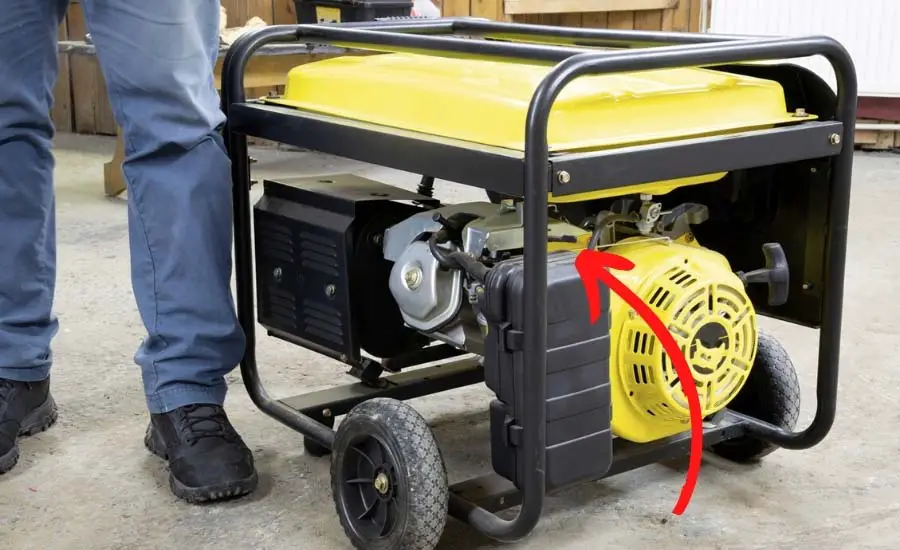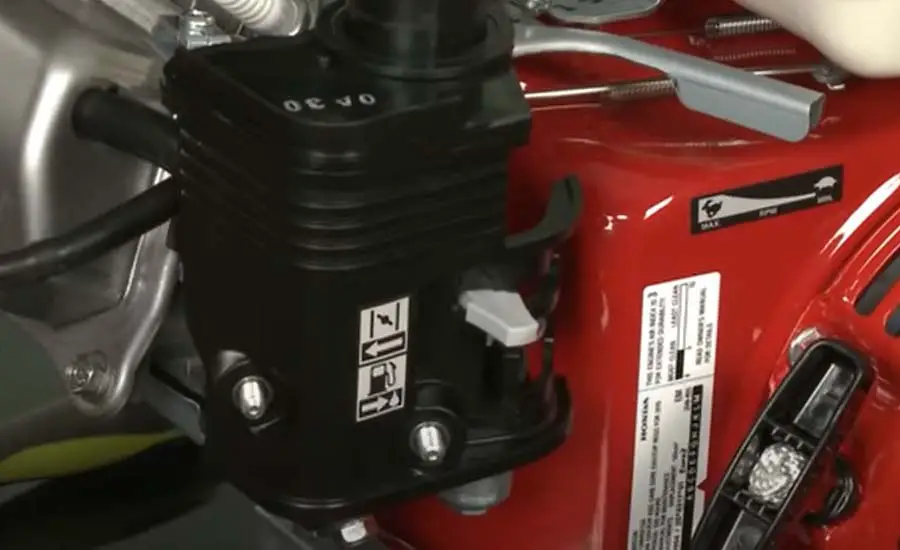
Starting a generator for the first time is something that will either be easy, or you may spend a few hours trying to get it to start. The first thing that people will usually ask when they come to help you is whether the choke is on or off. If this is your generator, you may wonder what the choke on a generator does?
The choke on a generator is a lever that provides more fuel to the engine when it is a cold start. The choke achieves this by creating a rich fuel-to-air ratio within the engine’s pistons, causing a more volatile explosion to happen as there is more fuel available to burn.
This is the simplified version of how a choke works; as your generator ages, the need it has from the choke will change significantly. We recommend that you know precisely how the choke works, what it does, and how it operates to ensure that it can breathe properly. A lot of damage can be done to the generator when the choke is misused, as it struggles to breathe while producing much-needed energy.
Can You Leave the Choke Closed on a Generator
The purpose of the choke is to make the air to fuel mixture much richer, which means that you will have to adjust the choke as the engine warms up.
Many people adjust the choke once and then leave the generator to do its thing, only coming back out to adjust when they hear something funny. Doing this can cause the engine to run too rich, using too much fuel, clogging the filters, and eventually causing damage to the pistons as it heats up too much.
You cannot leave the choke closed; the engine will overheat and not start at all if fully closed, breathing harder and harder if left slightly open and reaching operating temperatures. Adjusting the choke to be in the fully open position as the engine works harder is an integral part of keeping your generator running smoothly.
Opening the choke to the fully open position would be a mistake once the engine has started, especially when it’s cold outside. However, the choke should never be in a fully closed position, even when starting the engine. This will cause what is known as flooding when there is no air inside the machine and only fuel; this stops any reaction from taking place as oxygen is always needed.
How Do You Know If a Generator Choke Is On or Off?

All generator engines, even the oldest ones, will have lettering on the choke to show you which way is open and closed. You can hear whether the choke is open or closed by the sound of the cold engine as well. If the engine turns a few times then sputters to death, then it is fully open. When it is hard to turn, and there are no combustion sounds, you’ll know it’s closed.
Usually, when the engine runs regularly, the choke will open when you start the engine. The choke only needs to be used when the engine is cold, as a richer fuel mixture is required to ignite the initial internal combustion process.
However, hot engines rarely need the choke to be closed. Further, you won’t have to use the choke as often on a properly serviced generator.
New generators have automatic choke controls and electric starters, making adjusting the choke entirely unnecessary. The system opens the choke for you as the engine heats, and the overall performance increases significantly.
If the engine starts to sputter while it has fuel, it signifies that you need to open the choke to let in more air. Listening to how the engine is behaving will tell you the position of the choke.
At Which Position Should the Choke Be On a Generator?
| Generator Engine Stage | Proper Generator Choke Position |
| Starting a Cold Engine for the First Time | 1/2-3/4 Closed |
| While the Generator Is Running | Open |
| Restarting a Previously Warmed Up Hot Engine | Open |
This may be what has been bothering you the most while your generator has been running, with many people quite shocked at how loud the engine becomes once the choke is open. Because of this, you need to know how to adjust the choke while using the generator. Your generator may be perfectly fine with how you are treating it now, but as it ages, its needs will change as well.
You need to take several steps when adjusting the choke on a generator. You must ensure that you position the choke right to have everything work properly in each state the engine is in.
You will need to know two main areas: the choke’s position when the engine is cold and the position of the choke when the engine is hot. While there are in-between positions, you will usually only have them at those for a few minutes as the engine is working.
Position of the Choke When Starting the Engine
When the engine is cold and starting it for the first time that day, it needs to be between half and three-quarters closed, letting in a minimal amount of air. You will need to adjust the choke until the generator starts; the trick is to reach the combustion temperature for the air and fuel inside the engine.
Usually, this will be pretty easy to achieve with new models as the filters are clean, the pistons are ready, and everything is still shiny. The engine may even cold start when the choke is fully open. However, as the generator ages, the filters clog up, and the spark plugs become older, you must learn to adjust the ratio of air to fuel.
It can feel tiring at times, but it is natural for a well-used generator to need some help from the choke when starting.
Choke Position Once the Engine Is Hot
The choke does not need to be closed when the engine is already warm and ready to work; the internal engine temperature will easily and comfortably cause combustion to take place.
The choke does not need to be closed even if you are in a colder situation; the heat that passes through the engine will heat enough to create combustion properly. If your generator is older, it may need the choke slightly closed to help jumpstart everything again, but it is rarely required.
The point of the choke is to create a mixture of air and fuel that can be ignited with ease by the spark plugs. If everything is maintained and cleaned correctly, it will not be necessary to use the choke when the engine is warm.
Suppose the outside temperatures are pretty hot already; in that case, you may never need to use the choke at all, which usually happens in warmer countries where snow is almost impossible.
Conclusion
The choke on your generator may seem like a confusing and scary part to use, especially as your knowledge of the machine increases. Fortunately, its function is relatively easy to understand and use appropriately once you know everything. After a few trial-and-error movements, most people quickly learn how to use the choke to make their generator start.
Just make sure that you are not randomly twisting the choke around to achieve something great, usually doing more damage than good!

